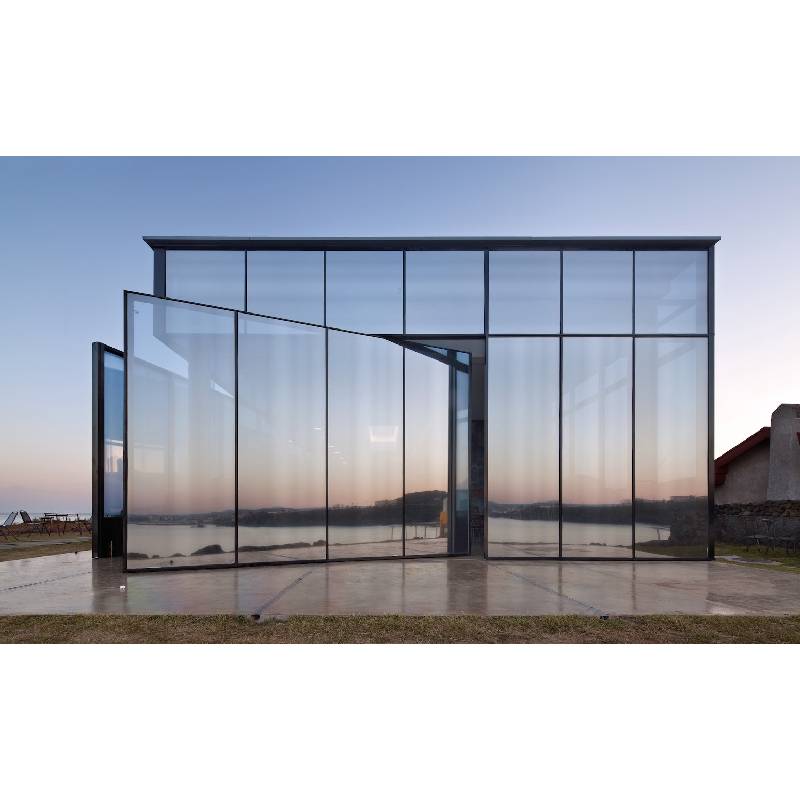Tinted glass material, a versatile and innovative architectural element, has revolutionized the way we perceive and interact with our built environment. This specialized glass is not just a simple addition to buildings; it's a sophisticated design feature that offers a range of benefits, from aesthetics to functionality.
The term tinted refers to the process of adding a layer of color or dye to the glass during its manufacturing. This tint can vary from subtle shades of gray or blue to more vibrant hues, providing an aesthetic appeal that complements various architectural styles. The primary purpose of tinted glass is to control the amount of sunlight and heat that enters a space, thereby enhancing energy efficiency and comfort.
One of the most significant advantages of tinted glass material is its ability to reduce solar heat gain. By absorbing a portion of the sun's rays, it helps maintain a cooler indoor temperature, reducing the reliance on air conditioning systems and subsequently, energy consumption. This not only contributes to a greener environment but also results in cost savings for building owners.
Furthermore, tinted glass provides excellent UV protection. It blocks harmful ultraviolet rays that can damage furniture, carpets, and other interior furnishings, preserving their color and integrity over time. It also shields occupants from the harmful effects of prolonged exposure to UV radiation.
Privacy is another key benefit offered by tinted glass
Privacy is another key benefit offered by tinted glass

Privacy is another key benefit offered by tinted glass
Privacy is another key benefit offered by tinted glass
 tinted glass material
tinted glass material. The degree of transparency can be adjusted according to need, allowing for a balance between visibility and seclusion. In residential settings, this can be particularly useful for bedrooms or bathrooms, while in commercial spaces, it can create a professional ambiance without compromising on light.
Moreover, tinted glass materials add an artistic touch to architectural designs. They can be used for stunning façades, intricate window patterns, or even as a medium for digital printing, transforming buildings into works of art. The aesthetic versatility of tinted glass allows architects to express their creativity while still maintaining practicality.
However, it's important to note that the choice of tinted glass depends on factors such as location, orientation, and climate. In colder regions, for instance, a lighter tint might be preferred to allow for more natural light and warmth. Therefore, careful consideration and planning are essential in utilizing tinted glass effectively.
In conclusion, tinted glass material is more than just a design element; it's a smart solution that harmoniously blends style, comfort, and sustainability. As technology advances, we can expect even more innovative applications and improvements in tinted glass, further enhancing its role in shaping our built environment.


 Privacy is another key benefit offered by tinted glass
Privacy is another key benefit offered by tinted glass
Privacy is another key benefit offered by tinted glass
Privacy is another key benefit offered by tinted glass tinted glass material. The degree of transparency can be adjusted according to need, allowing for a balance between visibility and seclusion. In residential settings, this can be particularly useful for bedrooms or bathrooms, while in commercial spaces, it can create a professional ambiance without compromising on light.
Moreover, tinted glass materials add an artistic touch to architectural designs. They can be used for stunning façades, intricate window patterns, or even as a medium for digital printing, transforming buildings into works of art. The aesthetic versatility of tinted glass allows architects to express their creativity while still maintaining practicality.
However, it's important to note that the choice of tinted glass depends on factors such as location, orientation, and climate. In colder regions, for instance, a lighter tint might be preferred to allow for more natural light and warmth. Therefore, careful consideration and planning are essential in utilizing tinted glass effectively.
In conclusion, tinted glass material is more than just a design element; it's a smart solution that harmoniously blends style, comfort, and sustainability. As technology advances, we can expect even more innovative applications and improvements in tinted glass, further enhancing its role in shaping our built environment.
tinted glass material. The degree of transparency can be adjusted according to need, allowing for a balance between visibility and seclusion. In residential settings, this can be particularly useful for bedrooms or bathrooms, while in commercial spaces, it can create a professional ambiance without compromising on light.
Moreover, tinted glass materials add an artistic touch to architectural designs. They can be used for stunning façades, intricate window patterns, or even as a medium for digital printing, transforming buildings into works of art. The aesthetic versatility of tinted glass allows architects to express their creativity while still maintaining practicality.
However, it's important to note that the choice of tinted glass depends on factors such as location, orientation, and climate. In colder regions, for instance, a lighter tint might be preferred to allow for more natural light and warmth. Therefore, careful consideration and planning are essential in utilizing tinted glass effectively.
In conclusion, tinted glass material is more than just a design element; it's a smart solution that harmoniously blends style, comfort, and sustainability. As technology advances, we can expect even more innovative applications and improvements in tinted glass, further enhancing its role in shaping our built environment.